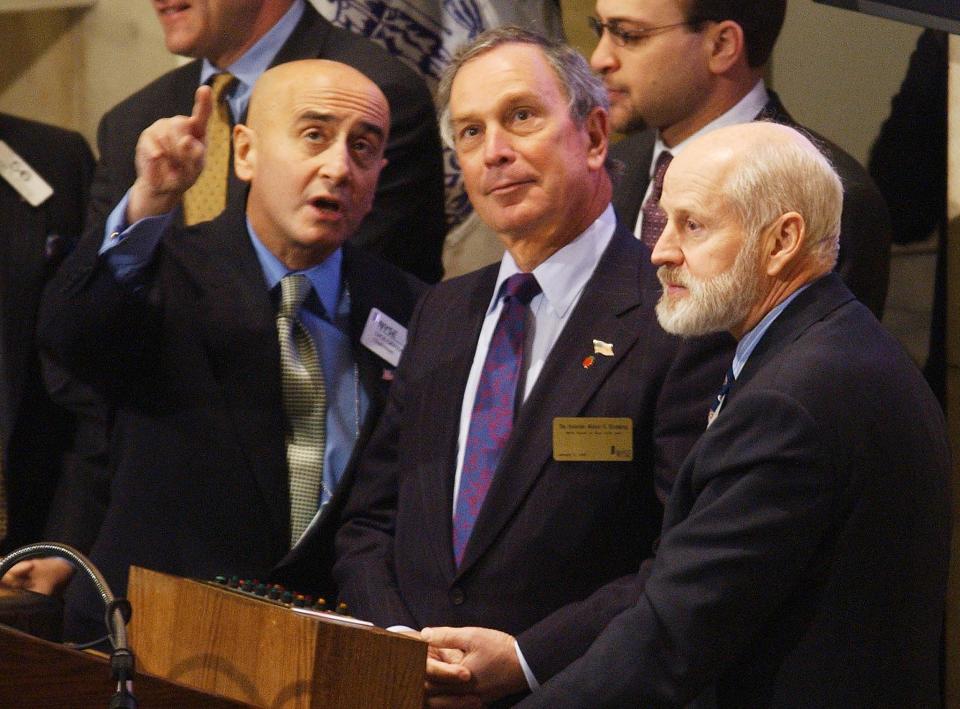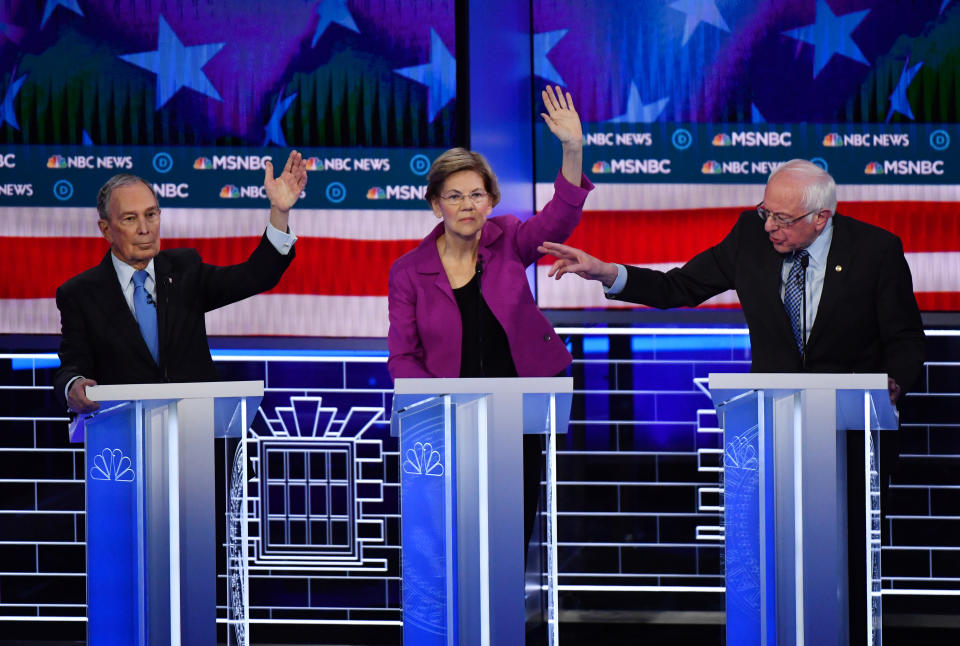Mike Bloomberg has done an about-face on Wall Street reform

Can a leopard change its spots? That is the central question hanging over Michael Bloomberg’s candidacy for the Democratic presidential nomination. He has spent nearly a half billion dollars of his personal fortune on a massive advertising campaign and raft of policy proposals designed to show he is a man of the people.
Unfortunately for his campaign, when voters got their first chance to see him live at last week’s presidential debate, he did not perform well. He failed to adequately explain or atone for a litany of past statements and positions cited by opponents that suggest he is a rich elitist with troubling views toward women and minorities. He will get another chance at tonight’s debate, but credibly distancing himself from his past record will present a formidable, if not insurmountable, challenge.
Take his positions on Wall Street, where he made his fortune selling market data and news to big banks and securities firms. Channeling U.S. Sen. Elizabeth Warren, he says he wants a financial system that “works for every American” — a sentiment lifted straight out of her campaign literature.
To prove it, he proposes hiking taxes on wealthy investors, imposing a levy on financial transactions, and toughening financial regulations. It is a fine list. The problem: It is the polar opposite of his past positions.
MIA on banking reform — or taking the side of industry
For instance, he promises to toughen bank capital rules so that big banks do not collapse under the weight of their own debt obligations, as they did during the 2008 financial crisis. Yet, prior to the crisis, he pushed for weakening bank capital rules through adoption of the so-called “Basel II” accords. Basel II would have released hundreds of billions of equity capital from the U.S. banking system, giving particular relief to banks with large portfolios of mortgages and mortgage-backed securities.

I should know. The agency I then chaired, the FDIC, was leading the effort to resist Basel II implementation. To be fair, Bloomberg’s views were very much in the mainstream during that deregulatory era. The FDIC was mostly alone in the fight. However, even after the crisis, when there was widespread vindication of the FDIC position, Mr. Bloomberg did not actively join the broad consensus in favor of stronger capital rules.
Indeed, throughout the post-crisis battles on financial reform, Mr. Bloomberg was largely absent or taking the side of industry. Now, he decries the financial deregulation that has occurred under the Trump Administration and says he wants to restore the vitality of Obama-era rules. His new-found support for financial stability is welcome, yet Trump appointees have been eroding financial reforms since 2017. Where has he been?
Deregulatory efforts have been particularly savage toward the Volcker Rule, a central feature of the 2010 Dodd-Frank financial reform law that restricts banking organizations from engaging in risky speculation. Mr. Bloomberg says he wants to strengthen the Volcker Rule by correcting its “flaws.” But those flaws stem from the numerous exceptions big bank lobbyists secured from Congress during the Dodd-Frank debate where, again, Mr. Bloomberg was MIA. Far from supporting Dodd-Frank, he later called the law “stupid,” even suggesting that Congress should have given the financial industry a bigger hand in writing it!
The most troubling statements from Bloomberg’s past
Perhaps most troubling are Mr. Bloomberg’s past statements on racial discrimination in banking. His campaign says he wants to strengthen consumer protections and the Community Reinvestment Act (CRA), a law enacted in the 1970s that imposes affirmative obligations on banks to lend to low and middle income communities. The CRA was designed to counter the then-pervasive practice of redlining, where banks would refuse to lend in minority neighborhoods. In a 2008 forum hosted by Georgetown University, Bloomberg related the causes of the financial crisis to the end of redlining.
He even implied benign motives behind the practice, saying banks didn’t lend in poor neighborhoods because the people there couldn’t pay off their mortgages (ignoring the fact that banks redlined wealthy minority neighborhoods as well).
He then laid the blame for the crisis with Congress, which he said pushed banks to make loans to low-income families with poor credit.
“It all started back when there was a lot of pressure on banks to make loans to everyone,” Bloomberg, said back in 2008, as reported by the Associated Press. “Redlining, if you remember, was the term where banks took whole neighborhoods and said, ‘People in these neighborhoods are poor, they’re not going to be able to pay off their mortgages, tell your salesmen don’t go into those areas.’”
“And then Congress got involved — local elected officials, as well — and said, ‘Oh that’s not fair, these people should be able to get credit.’ And once you started pushing in that direction, banks started making more and more loans where the credit of the person buying the house wasn’t as good as you would like.”
Still, even that explanation is wrong-headed and has been repeatedly debunked. The vast majority of subprime mortgages were made by non-bank lenders that were not subject to the requirements of CRA. These now-defunct lenders were propped up by Wall Street’s securitization machine, which made fat profits off the deals. Far from extending credit to people who could not afford a mortgage, the majority of subprime loans were refinancings. They were pushed on people who already owned homes and had accumulated equity, equity that was stripped by the high interest rates, steep payment resets, and stiff prepayment penalties that characterized Wall Street securitizations.
Bloomberg’s past public statements and actions regarding financial regulation represent only one facet of his troubling past. However, they provide good examples of how he is trying to reinvent himself without openly acknowledging or apologizing for significant errors in judgement. He seems unable to see the world beyond the Wall Street ecosystem that he has inhabited for so long. To be sure, his record as mayor of New York City has much to be admired: an improved educational system, reduced crime rate, robust job creation, and strengthened city finances. Yet even that impressive record is blemished by his administration’s use of racially tinged policies such as “stop and frisk” (for which, in this instance, he has apologized).
No one should question his competence and considerable administrative skills. The question is whether he will apply those skills for the benefit of all Americans. His pro-Wall Street positions were perhaps more understandable when he led a business and city reliant on Wall Street profits. However, he now aspires to lead a richly diverse nation that suffered terribly from the misdeeds of that industry.
A decade ago, researchers at Bristol University discovered that a leopard can, in fact, change its spots to adapt to a changing environment. Perhaps Michael Bloomberg will also be able to change as he enters the national stage. He has a lot of convincing to do.
Sheila Bair is the former Chair of the FDIC and has held senior appointments in both Republican and Democrat Administrations. She currently serves as a board member or advisor to a several companies and is a founding board member of the Volcker Alliance, a nonprofit established to rebuild trust in government.
Read more:
Low-income Americans need more wealth, not more debt
Why student loan forgiveness should target graduates who need it the most
Why the Fed should oversee Facebook’s Libra
How regulators can stop leveraged lending from becoming the new subprime
The $1.4 trillion student loan market faces a huge issue — transparency
Follow Yahoo Finance on Twitter, Facebook, Instagram, Flipboard, SmartNews, LinkedIn, YouTube, and reddit.